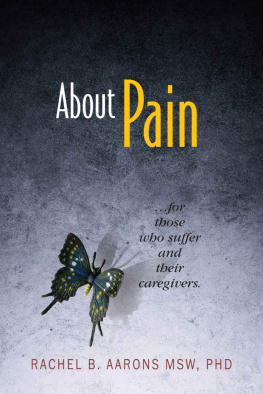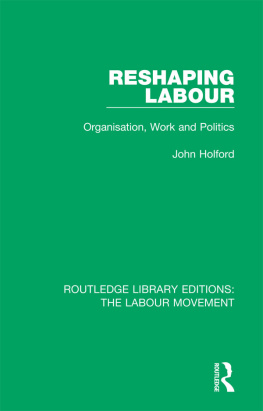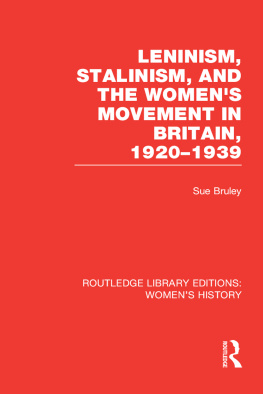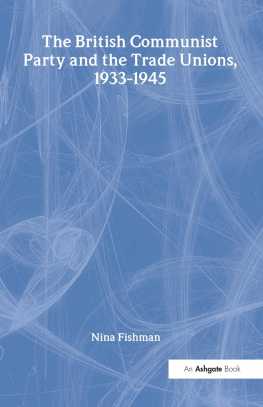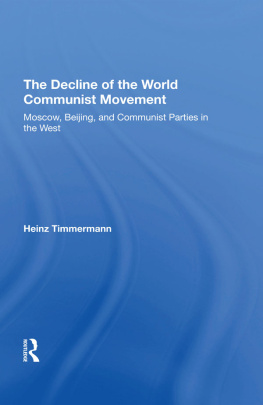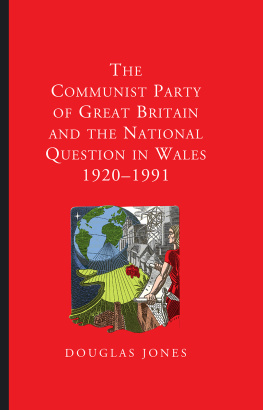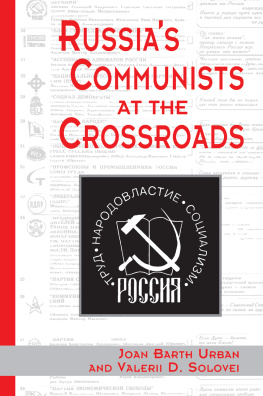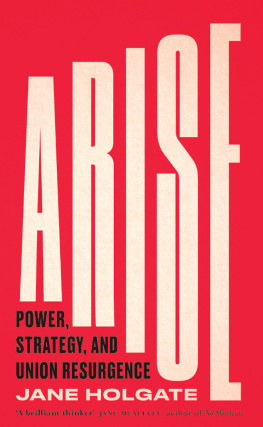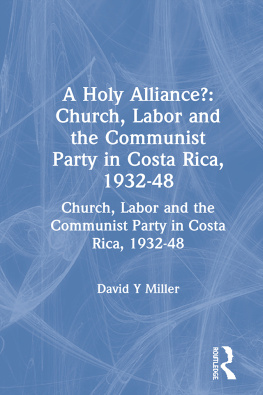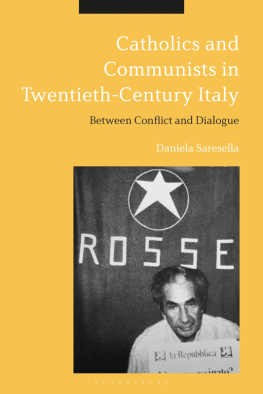
THE SHOW
Mark Aarons was an investigative reporter on ABC Radio National for twenty years, and was the founding executive producer of Background Briefing . He is the author or co-author of six books, including investigations of war criminals in Australia and the Vaticans role in smuggling mass killers, and works on Israel, Western intelligence, and East Timor. His most recent book was The Family File , an account of four generations of the Aarons family who were members of the Communist Party of Australia over seven decades, based on the largest single collection of ASIO files in history.
John Grenville joined the National Civic Council (NCC, also known as The Movement and The Show) in 1957, and operated as an influential but secret NCC member in the trade union movement for a decade. A committed Catholic, he was a senior official of the Victorian Trades Hall Council in the 1960s and 1970s, and federal secretary of the Federated Clerks Union from 1973 to 1975. He resigned from the NCC and his union position in 1975 in the midst of a bitter faction fight that ultimately tore the organisation apart in the early 1980s. He continued to work for the labour movement, as a freelance industrial advocate for many small and medium-sized unions.
Scribe Publications
1820 Edward St, Brunswick, Victoria 3056, Australia
2 John St, Clerkenwell, London, WC1N 2ES, United Kingdom
First published by Scribe 2017
Text copyright Mark Aarons 2017
All rights reserved. Without limiting the rights under copyright reserved above, no part of this publication may be reproduced, stored in or introduced into a retrieval system, or transmitted, in any form or by any means (electronic, mechanical, photocopying, recording or otherwise) without the prior written permission of the publishers of this book.
The moral rights of the author have been asserted
9781925322316 (Australian edition)
9781925548440 (e-book)
A CiP entry for this title is available from the National Library of Australia.
scribepublications.com.au
scribepublications.co.uk
In memory of Mary Grenville
Contents
Abbreviations
ACTU Australian Council of Trade Unions
AFLCIO American Federation of LaborCongress of Industrial Organisations
ALP Australian Labor Party
ASIA Australian Stevedoring Industry Authority
ASIO Australian Security Intelligence Organisation
CIA US Central Intelligence Agency
CDC Central Disputes Committee (CPA body responsible for internal security)
CIS Commonwealth Investigation Service
CPA Communist Party of Australia
DLP Democratic Labor Party
FIA Federated Ironworkers Association
FIET International Federation of Commercial, Clerical, Professional and Technical Employees
IAF Industrial Action Fund
ICF International Chemical Workers Federation
IFPCW International Federation of Petroleum and Chemical Workers
ISO Institute of Social Order (Jesuit organisation in Melbourne)
NCC National Civic Council
WWF Waterside Workers Federation
YCW Young Christian Workers
In key aspects the Movement was the mirror image of the Communist Party: in terms of passionate social concern, disenchantment with unjust capitalism, organisational structure and democratic centralism, conspiratorial methods and secrecy, a sense of apocalyptic struggle, messianism, and a conviction about the historical role of the party and its leader.
BRUCE DUNCAN ,
Crusade or Conspiracy?
Catholics and the anti-communist struggle in Australia
Preface
I began work on this book in 1991. The original idea was that it would be a parallel history of the Communist Party of Australia (CPA) and the Catholic Social Studies Movement, known most commonly as The Movement and, after 1957, as the National Civic Council (NCC). An officially endorsed body of the Australian Catholic bishops from 1945 to 1957, its inner-sanctum members among the clergy and laity affectionately called it The Show a term that I use interchangeably with The Movement in this account.
The titanic struggle between the CPA and The Show for control of the trade union movement and influence in the Australian Labor Party is well documented. So, too, is the biography of Bartholomew Augustine (Bob) Santamaria, the driving force behind The Movements formation, and its outstanding intellectual and organising director from its humble beginnings in 1942 until his death in 1998.
Although now swept away by modernity and the end of the Cold War, in the middle decades of the 20th century the CPA and The Show were two of the most powerful and influential organisations in Australian politics. They were opposed in a relentless pursuit of their ideals, which, in many ways, mirrored each other. Their members were passionate even fanatical in propounding their causes, and were prepared to make considerable personal sacrifices to achieve their political and social goals. While mutually antagonistic, there were many common threads in the ideologies of the two organisations especially a shared, trenchant critique of modern capitalism and an optimism for the future of humanity springing from their deeply held beliefs.
The differences between the two organisations were, however, also profound. At the time they joined battle in the midst of World War II, the CPA was an integral part of the international communist movement, tightly tied to Josef Stalins Soviet Union in ideology, practice, and organisational methods. Despite abundant evidence of Stalins crimes perpetrated against all opponents, real and manufactured the CPA embraced his Soviet model, lock, stock, and barrel, justifying mass repression as necessary to impose the dictatorship of the proletariat, defeat the enemies of the working class, and build socialism.
The Movement was concerned by communisms atheism and, especially, Stalins brutal repression of organised religion. It understandably feared that a victorious CPA revolution would be the end of Christian and more particularly, Catholic civilisation in Australia. Yet many of the CPAs leaders and committed activists were lapsed Catholics who like their counterparts in The Movement had first learned social-justice principles from the churchs teachings. This helps to explain many of the common threads in their otherwise diametrically opposed worldviews. But whereas communists looked forward to the dramatic and inevitable evolution of human society from monopoly capitalism through the transitional stage of scientific socialism and finally to the highest stage of human development communism Show members were more inclined to be backward looking. While rejecting capitalisms gross exploitation of ordinary people, under Santamarias leadership The Movement embraced a kind of feudal Catholicism that nostalgically saw small landholding agrarianism as central to a simple life based around a fundamental, traditional Christian society founded on the family unit, turning its face against the powerful secularising forces that became predominant in the decades after World War II.
Many events intervened in the more than twenty-five years since research for this book began, not least a serious horse-riding accident that befell my close collaborator and advisor, John Grenville, which left me without a compass to guide me through the maze of the Catholic side of the story. I knew the communist part well, having been brought up in a prominent CPA family, and our plan was to use our inside knowledge of the two political movements to track some of the most significant Australian political developments of the 20th century in as close to a real time history as could be constructed from hitherto inaccessible historical records.
Next page


